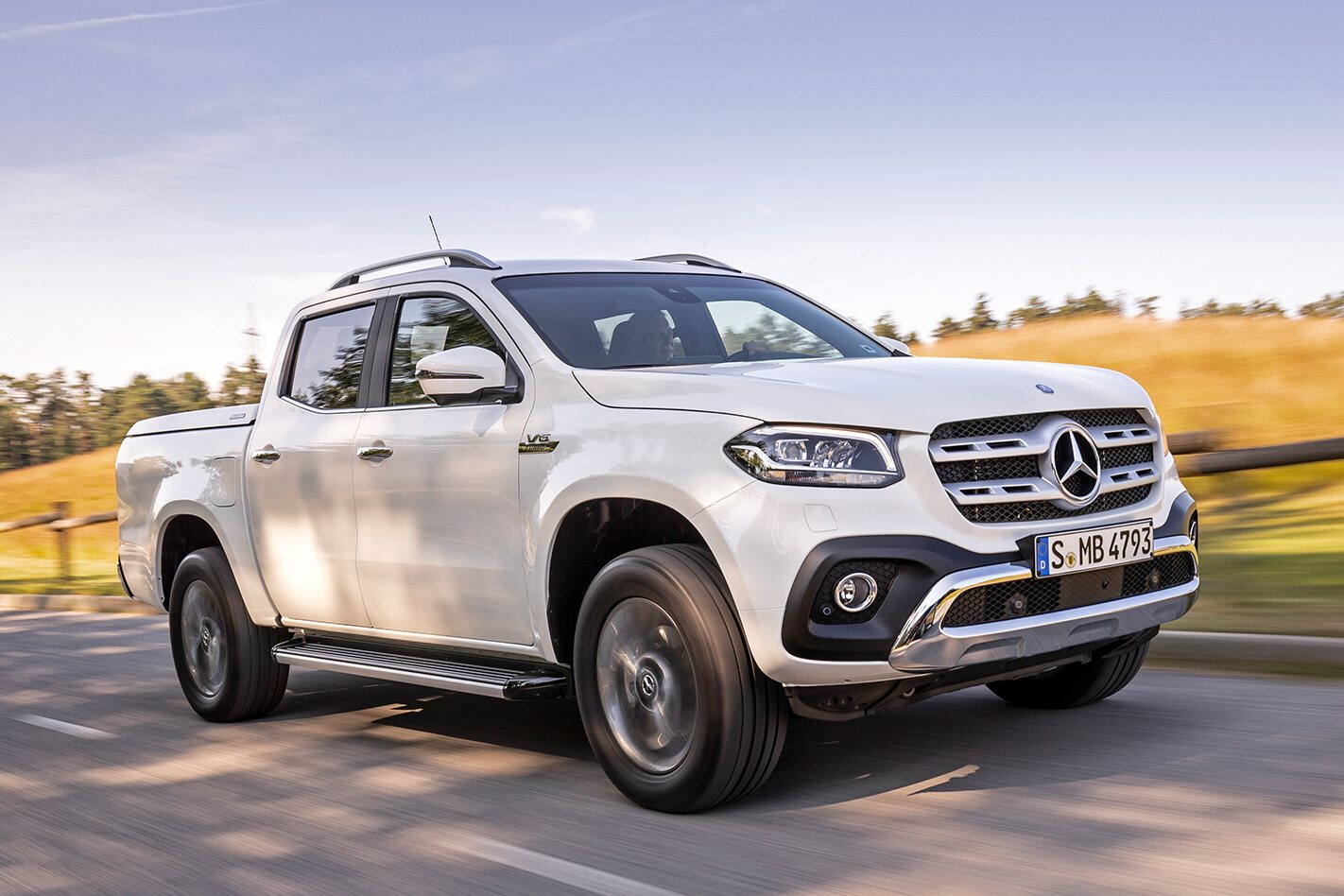WHAT IS IT?
This is the X-Class many people have been waiting for. Mercedes-Benz launched its Navara-based dual-cab ute at the end of 2017, but this V6-powered version, called X350d, is the first to get a proper Mercedes-Benz drivetrain rather than a carry-over four-cylinder engine and gearbox from Nissan. And it’s a radically different vehicle as a result, not only to the Navara but to the four-pot X250d as well.
WHY WE’RE TESTING IT
Local showrooms won’t see stock of the X350d until December, so the chance to preview it in Slovenia almost six months earlier was too good to pass up. Australia is one of the key markets for X350d specifically, and Mercedes-Benz is eager to get it right.
MAIN RIVALS
As the only other V6 dual-cab on the market, the X350d’s closest rival is the Volkswagen Amarok. But buyers at this end of the pricing spectrum will almost certainly be cross-shopping the Ford Ranger Raptor, HSV SportsCat and potentially even the V8-powered Dodge Ram 1500 truck.

THE WHEELS VERDICT
The X350d feels more like the vehicle we expected Mercedes-Benz to build when it set out to deliver a dual-cab ute. Impressive cabin refinement and comfort, effortless performance and thoughtful engineering that make it both a functional workhorse and a capable recreational tool.
PLUS: Refinement and comfort; gutsy performance; safety equipment MINUS: Brake pedal feel; last-gen infotainment interface
THE WHEELS REVIEW
BELIEF was justifiably high when Mercedes-Benz announced its dual-cab ute foray. Here was a premium manufacturer with relevant experience in off-road and commercial vehicles coming to play in one of Australia’s most popular segments. Couldn’t be a bad thing, right?
But the four-pot X250d that got the ball rolling with a carryover Nissan Navara drivetrain wasn’t quite what everybody had anticipated. Some potential buyers found it hard to believe the hype about X-Class being more than just a Nissan with a three-pointed star on the front.

The X350d is the one with the potential to get that message through. It’s the first X-Class to get a proper Mercedes-Benz engine and gearbox, and comes with a raft of other fundamental changes to support its performance hike that make it more than just an X-Class with a V6 in it. The X350d is radically different under the skin compared not only to the Spanish-built Navara with which it shares a production line and some components, but to the X250d as well.
The engine is a 3.0-litre turbo-diesel V6 as found in other Mercedes passenger cars and commercials, but producing 190kW and 550Nm in this application – 50kW and 100Nm more than the 2.3-litre X250d. It’s mated to a seven-speed automatic gearbox that’s controllable via paddle shifters, and feeds a permanent all-wheel drive system with a fixed 60:40 rear-biased torque split. Fuel economy is claimed at 9.0L/100km.
And it’s a burly performer. With a 0-100km/h sprint of 7.5 seconds it sits alongside the VW Amarok V6 as one of the quickest utes in the class. And it does that without any of the unwanted harshness or vibration associated with most other oilers. It’s an effortlessly fluid powertrain.
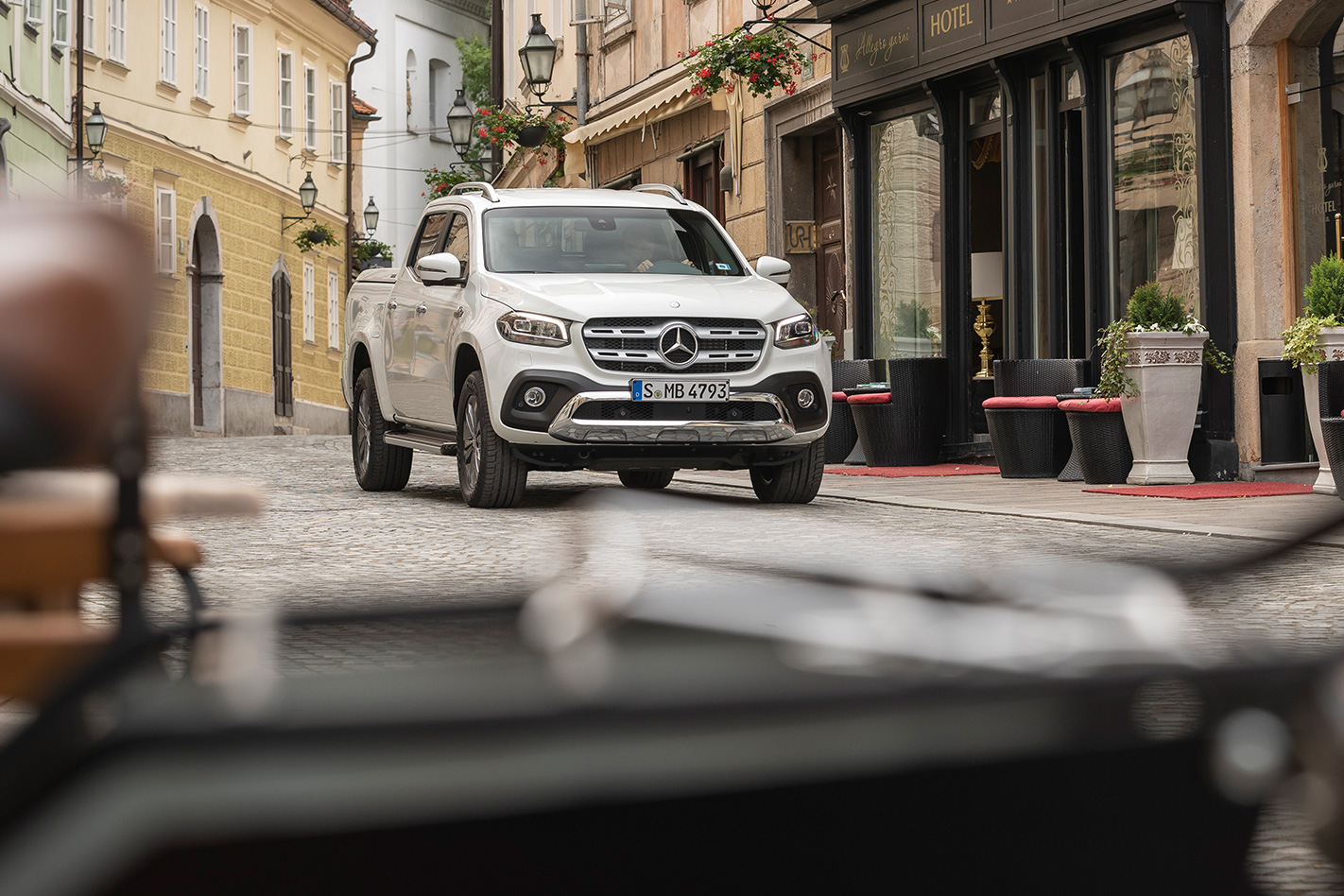
Mercedes’ engineers focused heavily on creating a car-like driving experience, which included a more comprehensive approach to improving its already impressive levels of noise suppression and cabin refinement. Engineering improvements specific to the V6 include additional crossmembers for the ladder frame and structural reinforcements for the body shell.
Its light steering is unchanged from the X250d, and passive, though a Sport mode for the V6 sharpens throttle response and alters gear shift points. There’s also a manual setting for more complete control and Eco and Comfort modes for reduced fuel consumption.
Suspension revisions for the X350d were difficult to judge during our drive, as Australian cars will get a taller suspension setup with 222mm of ground clearance rather than 202mm of European models. Detailed ride impressions will have to wait for a local launch late this year, though the experience during our overseas preview suggests Mercedes has struck a ride and handling balance that’s more cooperative in dynamic driving terms than most other dual-cabs. While firm, the X350d’s ride with an unloaded tray was far more agreeable than some of the overly bouncy alternatives in this segment. Its composure on gravel was equally impressive.
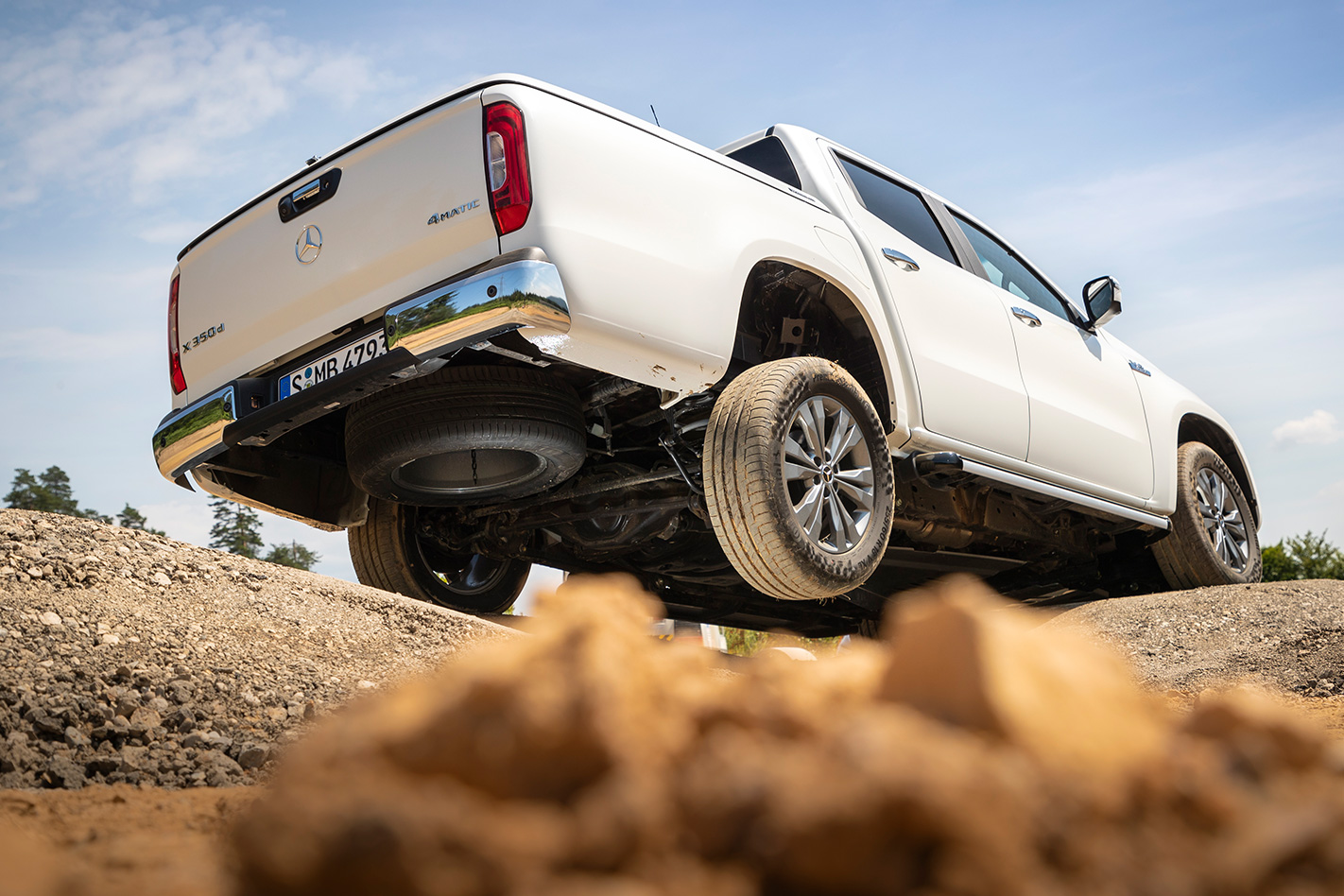
Part of that stability comes from front and rear tracks that are 70mm wider than the Navara on which it is based. That opens up room in the tray, which now measures 1215mm between the wheel arches – enough to fit a standard pallet. Payload is 1107kg and towing capacity is 3500kg. The X350d’s rear axle is variant specific, with the option of an electronically activated locking differential. The transfer case is also new for the V6 model – borrowed from the G-Class off-roader – and allows for the selection of low-range gears while the car is moving.
Hit the trails and the X350d will handle as much as most people will ever ask of it. Its off-road specific mode will climb 45 degree inclines and wade through water of up to 600mm in depth, though there is no speed adjustment for its hill descent control, which is locked at 5km/h in 4L and 8km/h in 4H.
An upgraded braking package brings ventilated discs to all four corners plus a stronger booster and larger diameter master cylinder. Having said that, confidence in the X350d’s stopping power could be improved by reducing its long pedal stroke and spongy feel.
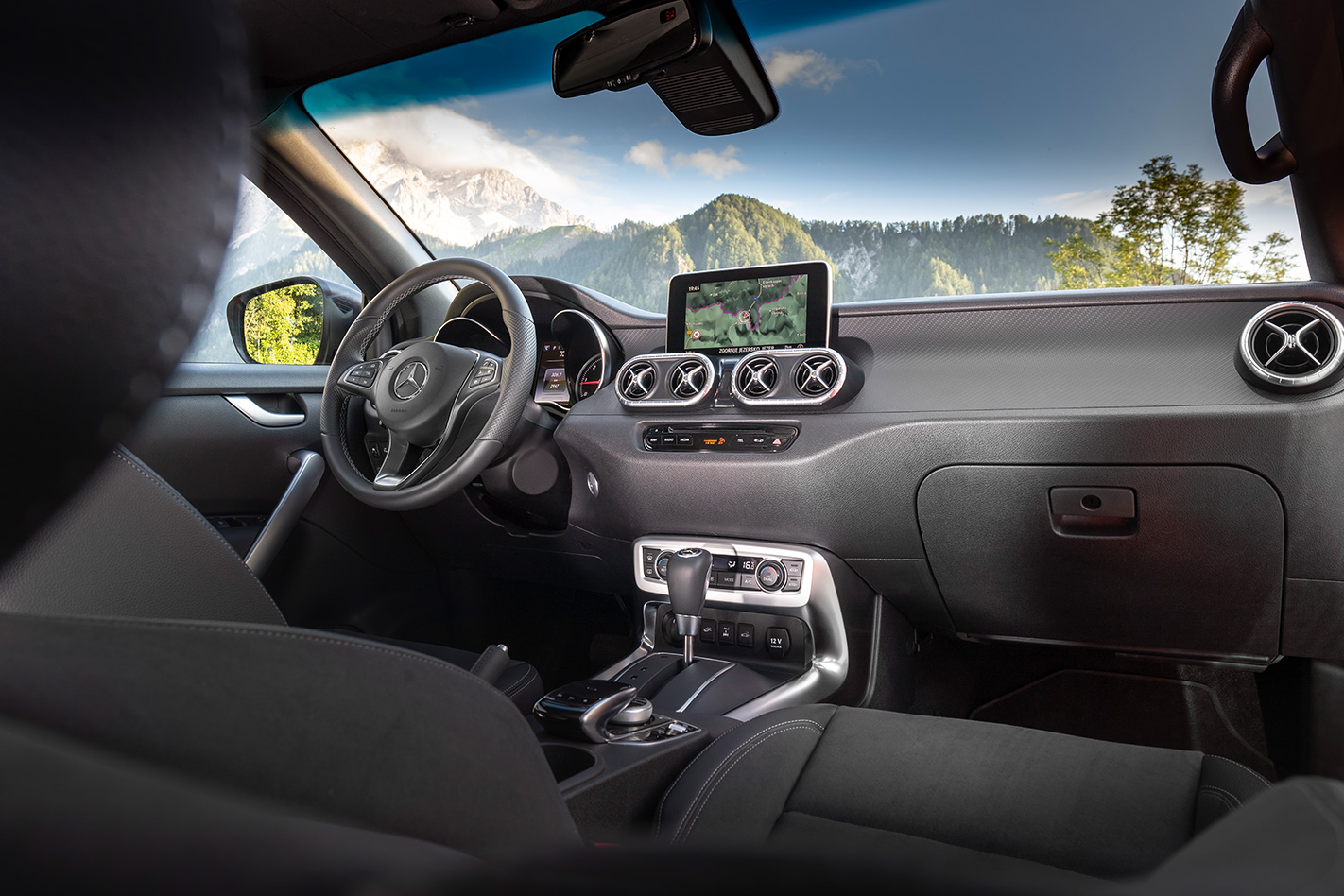
Extra width underneath extends upwards to a cabin that’s 50mm wider and 30mm taller than the Navara’s. Space inside is generous, though there’s less of a tradie focus here with a notable absence of storage pockets and other work-centric features. But it’s a nicer place to be than most dual-cabs; calm and comfortable, even after hours of driving.
Standard equipment includes active brake assist, lane keeping assist, traffic sign recognition, trailer stability control, seven airbags and ISOFIX attachments for two child seats. There are four 12v outlets (two front, one rear, another in the tray) and a 360 degree camera that’s useful for parking and when off-road. It’s at the pointy end of the class for features, though the last-gen infotainment interface is a shame.
Two X350d variants will be available locally. A more affordable Progressive version, and flagship Power. Specifications of each will be confirmed closer to its arrival in December, though it’s understood they will ride on 18-inch and 19-inch wheels respectively as standard, and leather trim will be optional. Pricing is also yet to be determined, though it’s almost certain to start in the mid-$70K range, where it will meet a fierce competitor in the Ford Ranger Raptor.
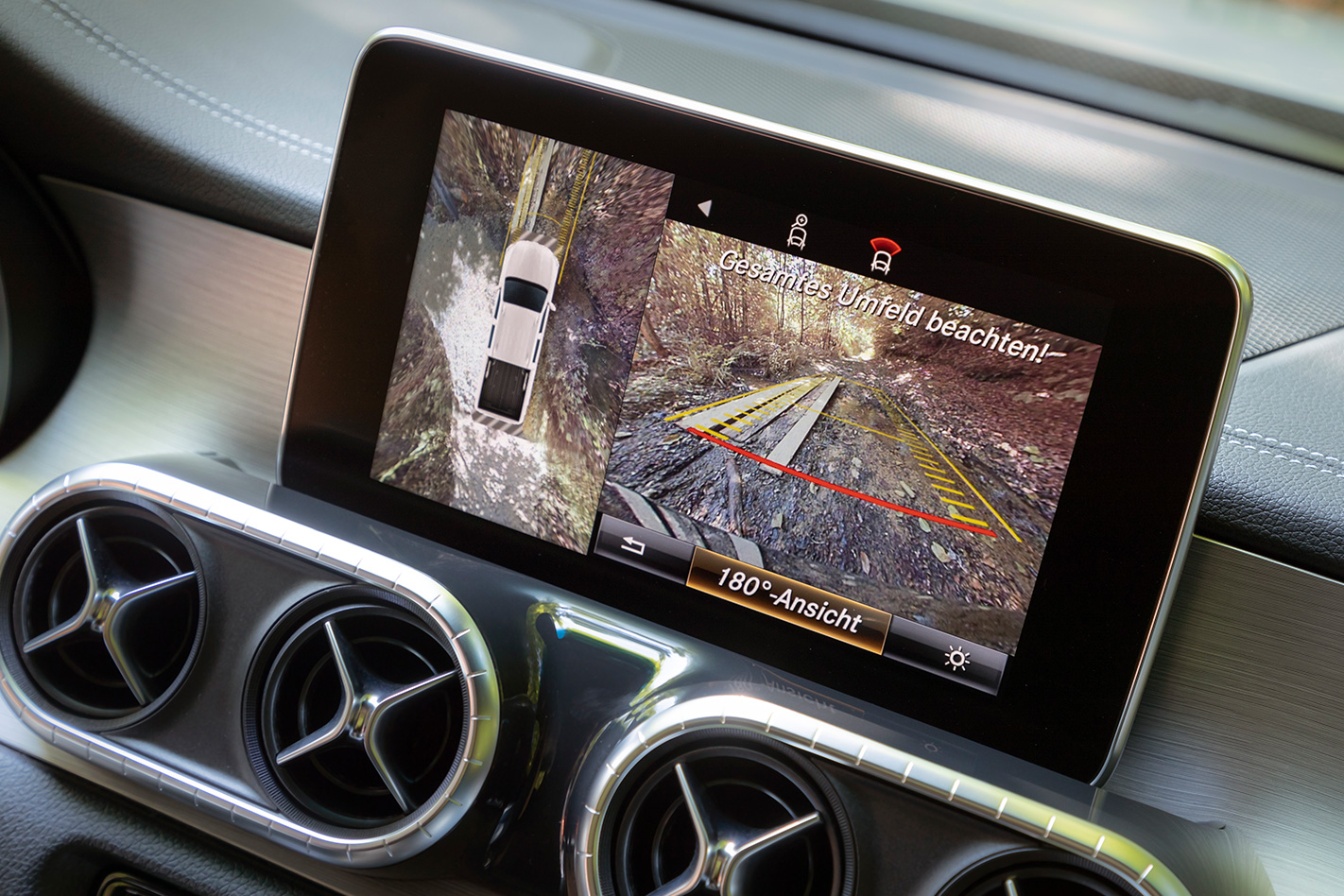
Anybody who felt that the X250d variants didn’t quite measure up to the full-fat Benz experience that was promised should be pleased about the X350d. This seems to be the vehicle Mercedes had in mind when it promised to deliver a dual-cab ute. It’s a little bit more polished, more capable on and off-road, and it sits closer to what buyers expect of a product with that hallowed three-pointed star on the snout.
SPECS
Model: Mercedes-Benz X350d Engine: 2987cc V6, dohc, 24v, turbo-diesel Max power: 190kW @ 3400rpm Max torque: 550Nm @ 1400-3200rpm Transmission: 7-speed automatic Weight: 2285kg 0-100km/h: 7.5sec (claimed) Fuel economy: 9.0L/100km (EU) Price: $75,000 (est.) On sale: December

